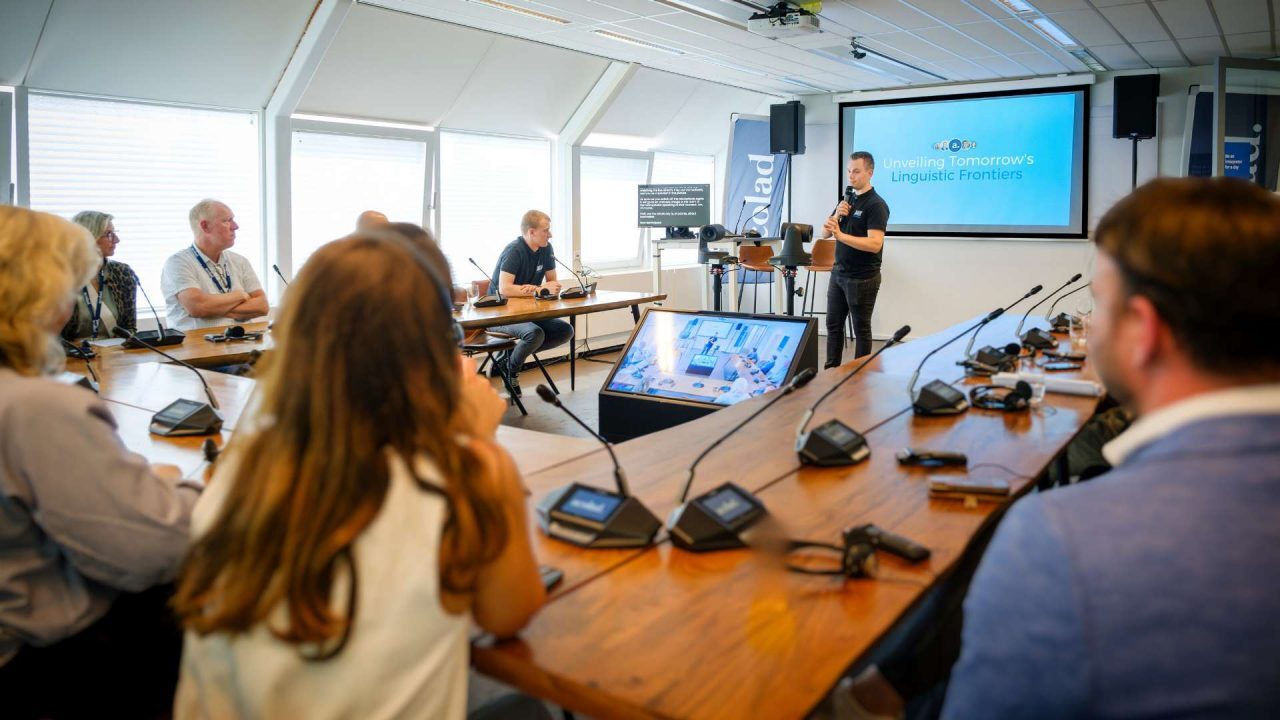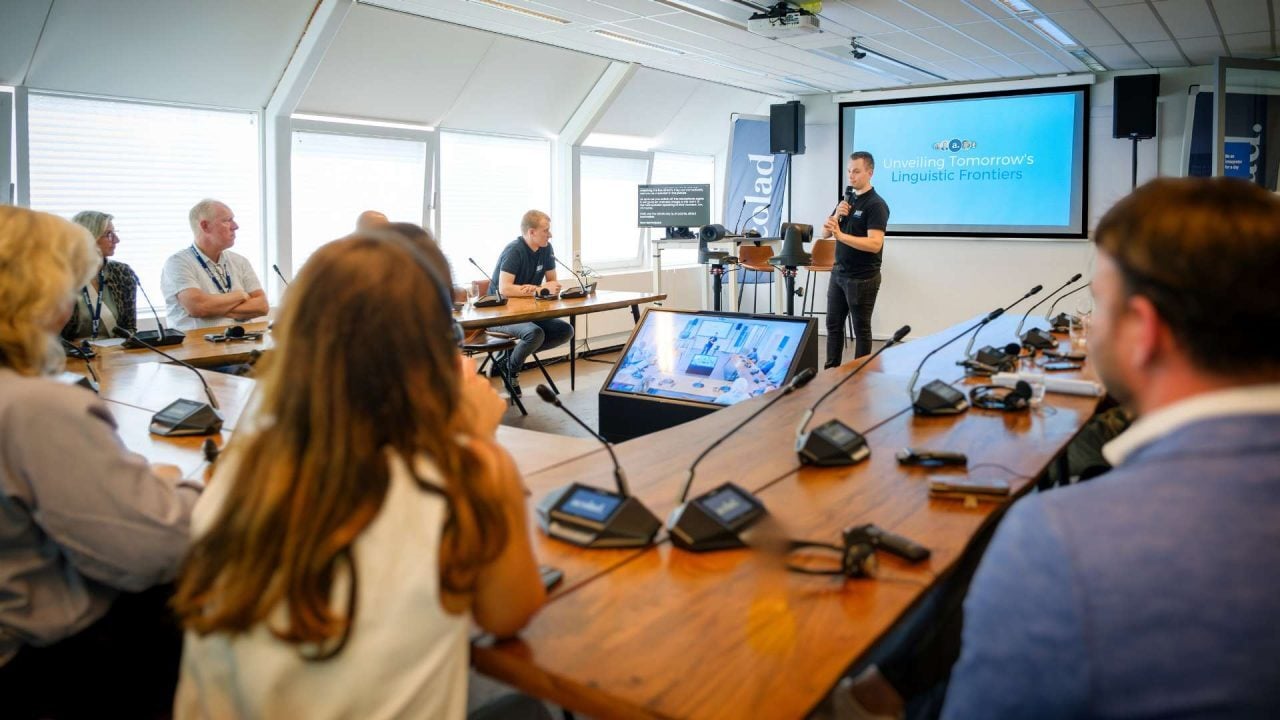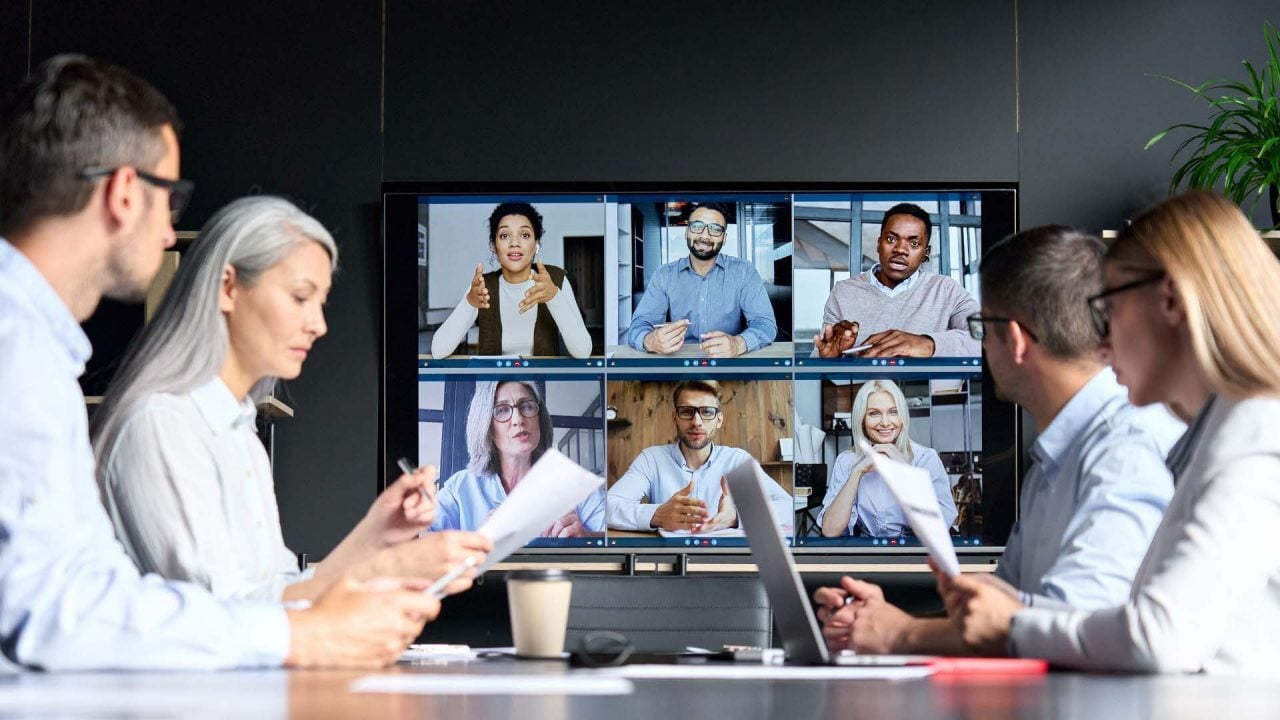Virtual meetings and events have become a constant in most people’s work days. With the rise of remote work and global collaboration, teleconferences, webinars, virtual gatherings or online corporate townhalls can be an efficient way to bring people together, regardless of where in the world they’re located.
But when your participants speak different languages, hosting a virtual meeting that’s successful and productive can become challenging. Effective communication is key to the success of any virtual gathering, and when dealing with a multilingual audience, it can become even more challenging.
There may be language barriers, cultural nuances, accents and dialects. These can lead to miscommunication and misinterpretation, resulting in confusion and obstacles to effective collaboration. People from different cultural backgrounds can also be used to different communication styles, attitudes and values, which can make it difficult to understand each other's perspectives and find common ground, for example.
But while language is a big challenge, you’re also likely to face obstacles when it comes to different time zones, technology limitations and technological difficulties.
To overcome all these challenges we’ve compiled a list of best practices to ensure your multilingual virtual session goes smoothly. Get ready to host inclusive virtual events that break language barriers and empower global accessibility!
1 - Preparation
Preparation is key when planning any virtual event, and when hosting to a multilingual audience it’s even more crucial. No participant wants to attend your session only to realize it’s being hosted in a language they can’t comprehend with no multilingual options available. So how do you start preparing for success?
Discover What Language(s) Your Attendees Speak
Your first step in preparing for a multilingual virtual event should be to find out the language requirements of your attendees, hosts and moderators. This means picking what languages will be used and checking if there’s a common language all your participants will feel comfortable communicating in.
Select Appropriate Language Support
Exploring your audience’s language requirements will also help you determine the need to translate meeting documents and communication materials, such as agendas and presentations, which will help to ensure that all attendees are able to follow along and participate fully in the meeting or event.
You should also consider whether you’ll need interpreters to support the dialogue. Interpreting helps all attendees understand and participate in your discussion as it happens. That way, they feel involved and heard.
Pick the Right Virtual Platform and Tools
You’ve probably been in a meeting where the host had been talking while on mute, someone lost their connection or attendees couldn’t hear the moderators properly. So, how can you avoid this?
Before the event, ensure everyone taking part has the right equipment to join and fully participate. This can mean a reliable internet connection, a microphone, a webcam or even a headset.
Choosing the right tools is crucial for the success of your meeting or event. The platform you pick to host should be user-friendly, reliable, and provide the necessary tools for effective communication. Look for options to add real-time translation, recording your session, AI-generated meeting notes and summaries, and the ability to have separate tracks for all interpreters. These tools help eliminate language barriers, ensuring all participants can understand and participate.
Test Before You Go Live
Before you hit the live button, test the technology and platform to ensure that it’s working correctly. This can help avoid technical difficulties. Make sure you gather all your speakers and moderators so they can ensure their connection is stable, lighting is good and that microphones and sound devices are all working smoothly.
By taking these steps in preparation, you eliminate potential barriers in communication and guarantee that both your hosts and attendees can participate equally.
2 - Communication
Effective communication in multilingual sessions goes way beyond providing multilingual options. While it may seem that communication only happens during the event, it starts well before the planning stages, with invitations and pre-event promotion. It also doesn’t end when the event schedule is done – post-event communications like follow-up emails to attendees and thank-you messages to speakers are also crucial.
Promote Your Session
Before the date, you need to promote your session, whether it’s “just” sending invitations to colleagues and finding a compatible time slot in their calendars, or preparing a multichannel campaign.
Will you need a dedicated event landing page or a fully localized event website? If you’re preparing a multilingual email campaign, make sure email content is well localized to your event’s target audience. When promoting your event’s key outcomes or benefits, remember there may be different expectations depending on the attendee’s cultural background, so tailor your messaging to showcase what your session will offer.
Use Clear and Simple Language
When communicating in a virtual meeting or event, you should use clear and simple language that everyone can understand. That’s even more important in virtual meetings compared to physical events because participants cannot rely on nonverbal cues, like body language and facial expressions, to help interpret and understand what’s being said.
Participants may also be multitasking or easily distracted, making it important to keep the language simple and straightforward to keep their attention and engagement.
Apart from these factors, limitations or technical issues with virtual communication platforms can also make it difficult to understand complex or technical language, for example when there’s as poor sound quality, internet connectivity issues or limited bandwidth.
Ask yourself – will my audience understand this? And avoid using jargon or technical terms that participants might not be familiar with.
Keep in Mind Cultural Nuances
Cultural differences play a significant role in communication. It’s crucial to be mindful of any cultural sensitivities of all participants. Avoid using language or gestures that could be perceived as offensive or insensitive in other cultures.
Encourage Participation from All Attendees
Using ice-breaker games, asking questions frequently and using interactive tools such as mobile apps can be the perfect way for your attendees to feel included and engaged in your discussions, making them more interesting and dynamic.
Illustrate your Point
Visual aids can help break up the monotony of a virtual meeting, making it easier for attendees to comprehend the information being presented. These can also be a huge help when it comes to reducing language barriers by providing a visual representation of the information.













